
8084
.pdfIII.Vocabulary focus:
1.Match the words from two columns to create a phrase and use the phrase in the sentence of your own to speak about
interact |
the most important computer parts |
work |
the mind to the computer structure |
pave |
good programming style |
enforce |
web based applications |
adapt |
way for learning other languages |
develop |
the fundamentals |
access |
on a wide range of platforms |
teach |
with the hardware |
2. Complete the sentence using one word:
applications, debugging, framework, ancestor, object, script, syntax, coding
1.Many famous websites were developed on this web development
…………. .
2.One of the reasons to pick up this language is that its ………… is easy to understand.
3. |
It is more convenient to develop web based ……………. i |
n python. |
4. |
It requires less time to write a simple …………… in th |
is language. |
5. |
………… in Java is knowing how and why the project wor |
ks. |
6. |
This is the first purely …………. oriented programming |
language |
7. |
C language is an ……… to many of the advanced progra |
mming languages. |
8.With the help of this language you will learn things like ……………
programs, memory management, and how computers work.
Group work (expert group):
Each expert group member will return to their home group and will retell the summary of their programming language specific features.
Group work (home group):
Correct the tables with programming language specific features
IV. Work with the Internet
Surf the net and be ready to tell about other popular programming languages. Find some additional information and facts about programming languages.
40
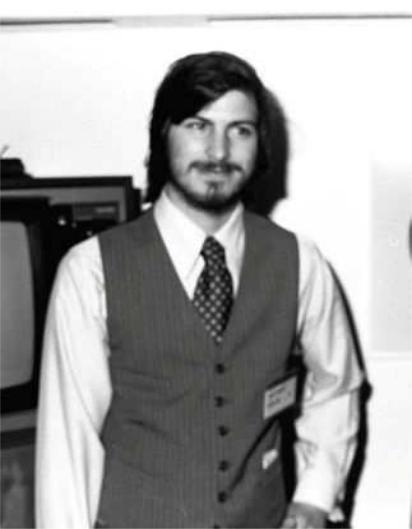
UNIT VIII
FAMOUS PEOPLE IN COMPUTING
I.Lead in
Group work (home group):
Collect information about the person from the picture.
-What does he do?
-What is his background?
-What are his traits of character?
You can use some expressions describing this person:
entrepreneur, marketer, inventor, chairman, CEO, charismatic, music industries, animation studio, laser printers, smart phones, diagnosis, health, death
41
II.Reading
1. While reading mark the information:
∙ |
I knew this fact ( + ) |
∙ |
I was not right about this ( – ) |
∙ |
This information was unknown for me ( ! ) |
|
STEVE JOBS |
Steve Jobs co-founded Apple Computers with Steve Wozniak. Under Jobs' guidance, the company pioneered a series of revolutionary technologies, including the iPhone and iPad.
Steven Paul Jobs was born on February 24, 1955, in San Francisco, California, to Joanne Schieble (later Joanne Simpson) and Abdulfattah "John" Jandali, two University of Wisconsin graduate students who gave their unnamed son up for adoption. As an infant, Steven was adopted by Clara and Paul Jobs and named Steven Paul Jobs. Clara worked as an accountant, and Paul was a Coast Guard veteran and machinist. The family lived in Mountain View, California, within the area that would later become known as Silicon Valley. As a boy, Jobs and his father would work on electronics in the family garage. Paul would show his son how to take apart and reconstruct electronics, a hobby that instilled confidence, tenacity and mechanical skills in young Jobs.
While Jobs was always an intelligent and innovative thinker. Jobs was a prankster in elementary school, and his fourth-grade teacher needed to persuade him to study. While Jobs studied at Homestead High School (1971), he was introduced to his future partner, Steve Wozniak. Wozniak was attending the University of California, Berkeley, at the time. In a 2007 interview with PC World, Wozniak spoke about why he and Jobs clicked so well: "We both loved electronics and the way we used to hook up digital chips," Wozniak said. "Very few people, especially back then, had any idea what chips were, how they worked and what they could do. I had designed many computers, so I was way ahead of him in electronics and computer design, but we still had common interests. We both had pretty much sort of an independent attitude about things in the world. ..."
After high school, Jobs enrolled at Reed College in Portland, Oregon. Lacking direction, he dropped out of college after six months and spent the next 18 months dropping in on creative classes at the school.
In 1974, Jobs took a position as a video game designer with Atari. In 1976, when Jobs was just 21, he and Wozniak started Apple Computer. The duo started in the Jobs family garage, and funded their entrepreneurial venture by
42
Jobs selling his Volkswagen bus and Wozniak selling his beloved scientific calculator.
Jobs and Wozniak are credited with revolutionizing the computer industry by democratizing the technology and making the machines smaller, cheaper, intuitive and accessible to everyday consumers. Wozniak conceived a series of user-friendly personal computers, and – with Jobs i n charge of marketing – Apple initially marketed the computers for $666.66 each. The Apple I earned the corporation around $774,000. Three years after the release of Apple's second model, the Apple II, the company's sales increased by 700 percent, to $139 million. In 1980, Apple Computer became a publicly traded company, with a market value of $1.2 billion by the end of its very first day of trading. Jobs looked to marketing expert John Sculley of Pepsi-Cola to help fill the role of Apple's president.
However, the next several products from Apple suffered significant design flaws, resulting in recalls and consumer disappointment. IBM suddenly surpassed Apple in sales, and Apple had to compete with an IBM/PC – dominated business world.
In 1985, Jobs resigned as Apple's CEO to begin a new hardware and software company called NeXT, Inc. The following year Jobs purchased an animation company from George Lucas, which later became Pixar Animation Studios. Believing in Pixar's potential, Jobs initially invested $50 million of his own money in the company. Pixar Studios went on to produce wildly popular animation films such as Toy Story, Finding Nemo and The Incredibles. Pixar's films have netted $4 billion. The studio merged with Walt Disney in 2006, making Steve Jobs Disney's largest shareholder.
Apple eventually bought the company in 1996 for $429 million. The following year, Jobs returned to his post as Apple's CEO. With a new management team, altered stock options and a self-imposed annual salary of $1 a year, Jobs put Apple back on track. His ingenious products such as the iMac, effective branding campaigns and stylish designs caught the attention of consumers once again.
Apple introduced such revolutionary products as the Macbook Air, iPod and iPhone, all of which have dictated the evolution of modern technology.
In 2003, Jobs discovered that he had a neuroendocrine tumor, a rare but operable form of pancreatic cancer. Instead of surgery, Jobs chose to alter his pescovegetarian diet while weighing Eastern treatment options. For nine months, Jobs postponed surgery, making Apple's board of directors nervous. In 2004, he had a successful surgery to remove the pancreatic tumor. True to form, in subsequent years Jobs disclosed little about his health.
On October 5, 2011, Apple Inc. announced that its co-founder had passed away. After battling pancreatic cancer for nearly a decade, Steve Jobs died in Palo Alto. He was 56 years old.
43
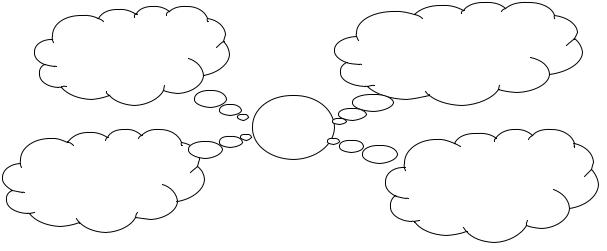
2.Compare the facts known to you and new information. Discuss this information in pairs.
3.Fill in the cluster with the most important facts from the Steve Jobs biography. The cluster should contain the key words you can find in the text.
Steve
Jobs
III.Vocabulary focus:
1.Match the words from two columns to create a phrase and use the phrase in the sentence of your own to speak about Steve Jobs.
independent |
sales |
entrepreneurial |
of marketing |
accessible |
disappointment |
market |
attitude |
branding |
value |
in charge |
to consumers |
increase |
campaign |
consumer |
venture |
2. Find words in the article which mean:
train, joker, induce, join, devise, raise, shortcoming, acquire, creative, following
IV. Work with the Internet
Surf the net and be ready to tell about other famous people in IT sphere. Present the information you found to your group mates. www.biography.com
www.inventors.about.com www.notablebiographies.com
44
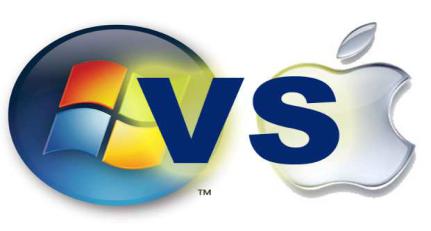
UNIT IX
APPLE VS MICROSOFT
I.Lead in
Discuss in pairs:
1.Why do people prefer one operating system to another?
2.What operating system do you like? Give your reasons.
3.What products does the Microsoft Company issue?
4.What products does the Apple Company have?
5.Product of what company do you prefer?
Complete the table with the arguments in favor of each company’s products:
MICROSOFT |
APPLE |
∙ |
∙ |
∙ |
∙ |
∙ |
∙ |
∙ |
∙ |
∙ |
∙ |
|
|
II.Reading
Read the computer magazine article and find more information in favor or against these companies’ products.
45
MACS® AND PCS
As Apple® grows in popularity, the Mac® versus PC d ebate continues. Many businesses experience trouble choosing between the two. However, businesses must realize that each computer is suited for different needs.
The two differ most in their operating systems. With PC you have a variety of OS options from Microsoft® and other sou rces. Macs® come with one of the proprietary Apple® OSes like OS X®. You can install Windows® on a Mac®, but many users prefer the Mac® OS regardles s.
Macs® have proven themselves vital in publishing, p articularly the prepress process. Mac® has superior typography and color matching. Once printed, products look exactly as good as they do on the computer screen.
Meanwhile, PCs are noted for their fast processing speed and adaptability. Users can customize a PC to their needs. Additionally, their video subsystems are more powerful. This makes PCs desirable for game designers and others who need advanced graphics.
However, both computers have their limitations. While PCs are cheaper, they are also more susceptible to viruses. Macs® us ually cost more but are less susceptible to computer viruses. However, Macs® ten d to have fewer third-party software options than PCs. Businesses need to consider such concerns and make the right decisions when buying computers for their companies.
III.Vocabulary focus:
1. |
Match the words with the definition. |
||
|
|
|
|
1. |
Apple® |
a) company that creates the most common |
|
|
|
|
PC operating system |
|
|
|
|
2. |
Windows® |
b) |
part of the computer that creates visuals |
|
|
|
|
3. |
customize |
c) |
system that is likely to be harmed by a |
|
|
|
virus |
|
|
|
|
4. |
OS X® |
d) |
operating system for PCs |
|
|
|
|
5. |
processing speed |
e) |
changing a computer for your needs |
|
|
|
|
6. |
video subsystem |
f) |
company that creates Macs® |
|
|
|
|
7. |
Microsoft® |
g) |
operating system for Macs® |
|
|
|
|
8. |
susceptible system |
h) a measurement of how quickly a |
|
|
|
|
computer works |
|
|
|
|
|
|
|
46 |
2.Fill in the blanks with the correct words:
prepress, color matching, PC, topography
1. |
A ……….. comes with OS X |
®. |
|
2. |
Publishing software is needed for the ………… process. |
|
|
3. |
Good ……….. means anything printed out looks like wh |
at’s on screen. |
|
4. |
I’m getting a ………… because I like the Windows |
® OS. |
|
5. |
The ……….. on his computer includes hundreds of font |
s. |
|
IV. Work with the Internet
Surf the net and find additional arguments in favor of each company.
www.computerhope.com http://www.computerworld.com/article/2507485/vertical-it/apple-vs--microsoft- by-the-numbers.html http://americasmarkets.usatoday.com/2014/07/23/apple-vs-microsoft-by-the- numbers/
Group work:
Make two groups. One group will present the interest of MICROSOFT Company another group will represent APPLE Corporation. Collect arguments in favor of each company and be ready for the cross discussion.
47
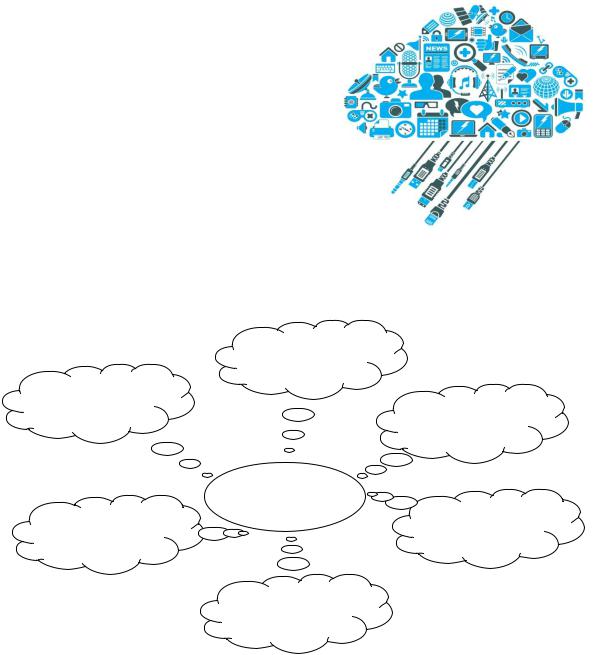
UNIT X
CLOUD TECHNOLOGY
I.Lead in
What is cloud computing?
How can cloud technology help people?
What are the benefits of this online service?
What are the downsides of this technology?
Do you use this technology?
Do you like it? Why?
Fill in the cluster with the most important cloud technology services.
CLOUD
COMPUTING
II.Reading
Read the computer magazine article and add more information to the cluster.
Answer the questions:
1.What are the benefits of the cloud technology for businesses?
2.What are the differences between the conventional and the cloud IT
services?
48
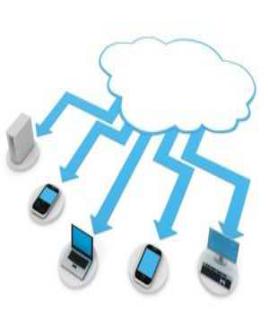
What is Cloud Computing and why does your small business need it?
Cloud computing is a way to increase capabilities on the fly without investing in a new infrastructure, training new personnel, or licensing new software.
Small businesses benefit from Cloud computing by not having to deploy physical infrastructure like file and e-mail servers, storage systems or shrinkwrapped software.
Cloud computing is a broad umbrella that includes Software-as-a-Service where a specific application or service is offered to a customer as a subscription.
Dropbox, Salesforce.com, and QuickBooks are all examples of SaaS.
SaaS provides a way of delivering a host of software and technical services that would usually be cost-prohibitive and difficult to manage as onpremise, local solutions.
Cloud computing has come a long way and is now mainstream technology for businesses.
The cloud does for IT as UPS and Federal Express did for the shipping industry.
Cloud computing capabilities deliver a plethora of network technology. Small businesses are most likely to not have an IT staff or technical, in-
house expert. Some companies don’t even know how to ask about their company’s tech infrastructure.
Joining the cloud can help reduce these stress of all the IT stuff.
In The Cloud
The different types of models of cloud are: public, private, community and hybrid.
∙Public cloud is available to the general public over the Internet. It’s a “ game changer” for small businesses and gives them access to enterprise-level applications.
∙Private cloud is within a corporate firewall. It is reserved for larger companies that have their own IT staff and data centers.
∙Community cloud is shared between different organizations. It’s a multitenant infrastructure with a pay-as-you-go billing structure.
∙Hybrid cloud is a combination
of the three. This cloud addresses configuration management, change control, security and budgeting.
49
